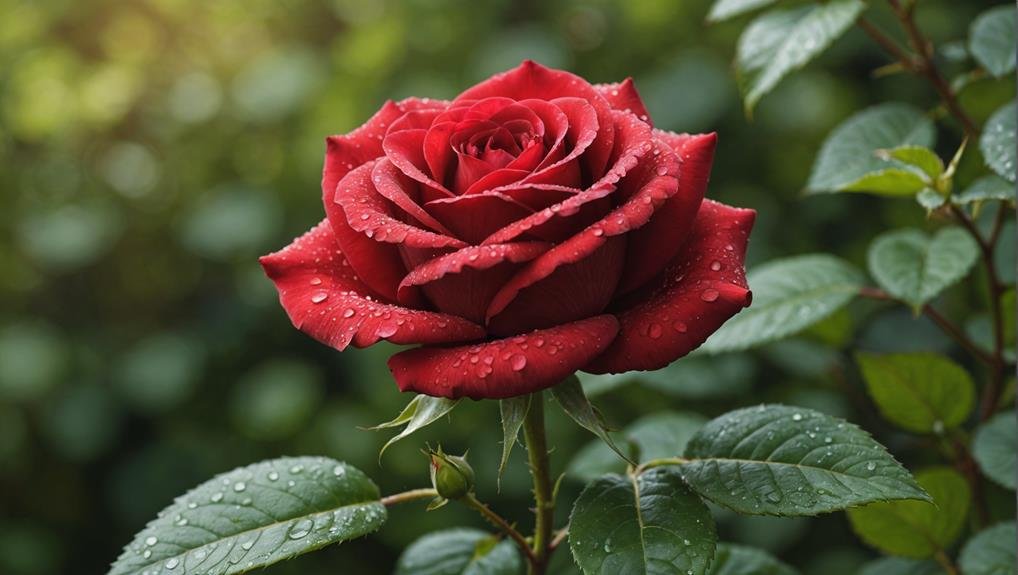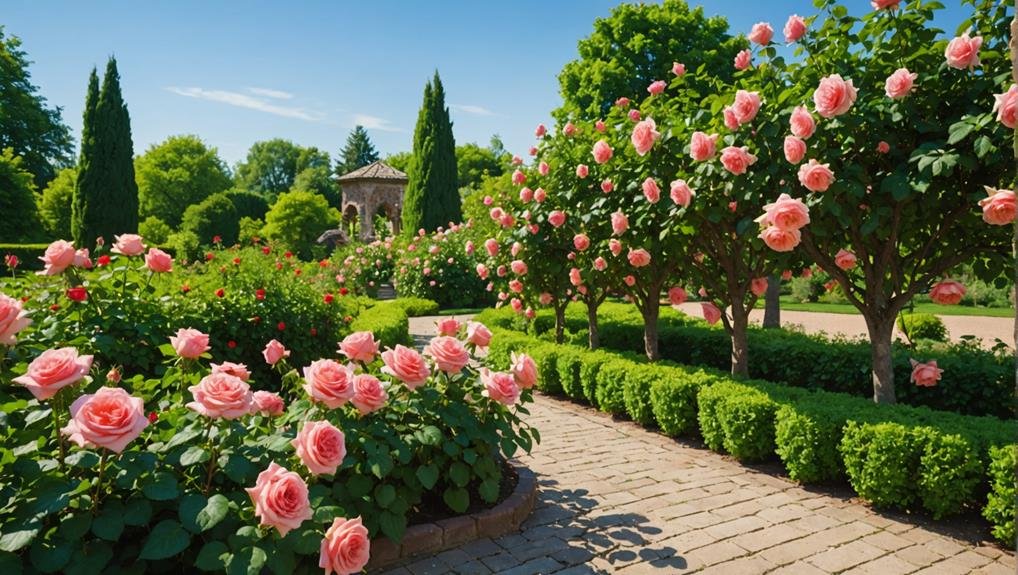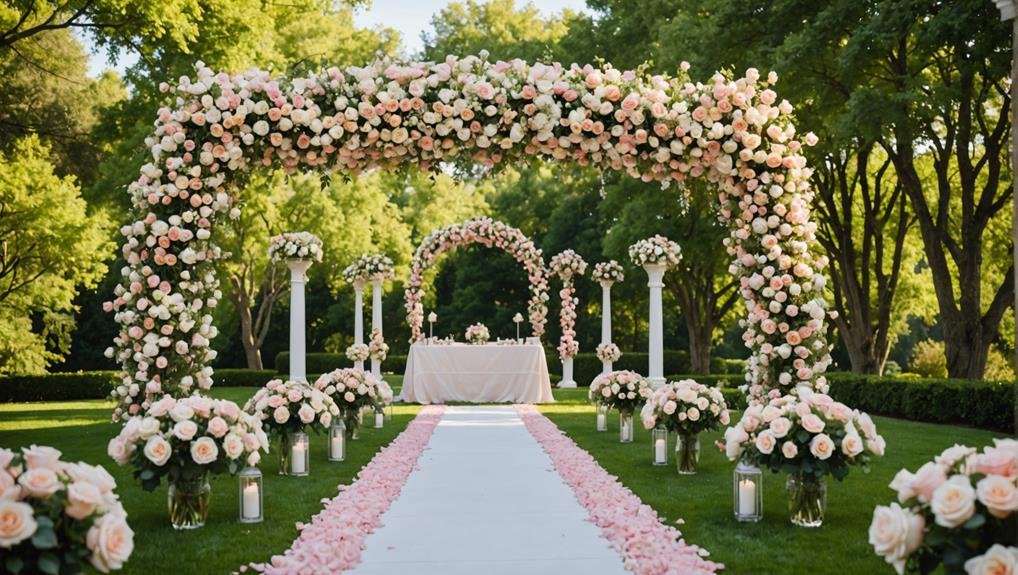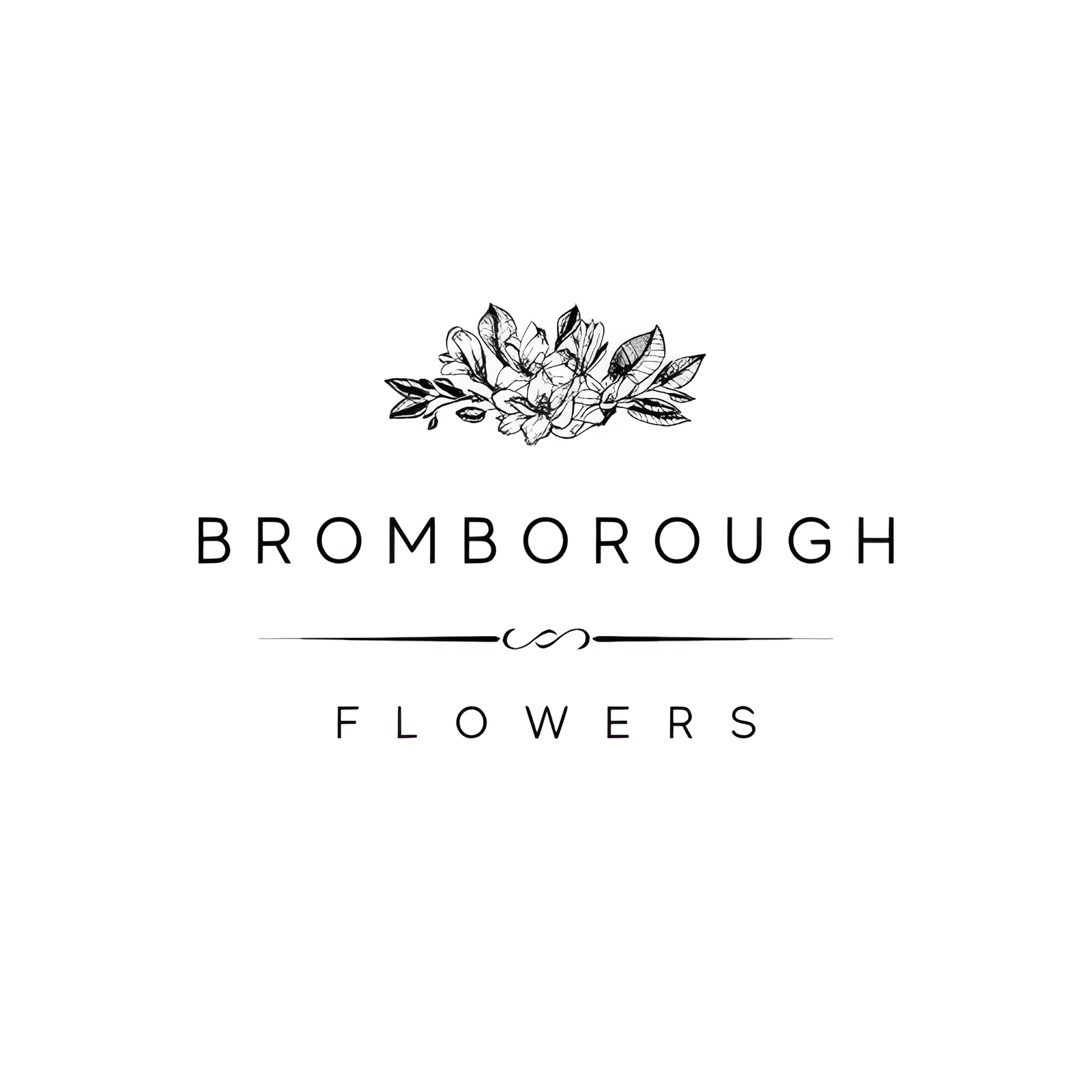Roses have long been a staple in wedding celebrations, admired for their timeless beauty and profound symbolism. These elegant blooms, available in a myriad of colors, each carry their own unique meaning, from the passionate red to the serene white. Their versatility makes them an ideal choice for various wedding elements, from the bride’s bouquet to intricate centerpieces. However, the true allure of roses extends beyond their aesthetic appeal, encompassing their seasonal availability, cultivation requirements, and deep-rooted cultural significance. As we explore the rich tapestry of roses, one begins to see why they remain an enduring favorite in matrimonial ceremonies.
Flower Overview

Renowned for their timeless grace and adaptability, roses are a quintessential option for wedding flowers, celebrated for their large blooms and extensive color range. These flowers are not only visually striking but also carry significant symbolic meanings that can enhance the emotional atmosphere of a wedding.
For example, red roses symbolize love and passion, making them a popular choice for bridal bouquets and romantic floral arrangements. White roses represent purity and innocence, ideal for classic, sophisticated weddings. Pink roses express joy and admiration, while lavender roses indicate love at first sight, and orange roses represent enthusiasm and passion.
Roses’ versatility extends beyond their symbolic meanings. They are a key element in various wedding arrangements, including bouquets, boutonnieres, centerpieces, and large floral displays, adding a hint of sophistication and beauty to the decorations.
When choosing roses for a wedding, factors such as budget, preferred colors, and the specific variety of roses should be taken into account to make sure the flowers complement the overall theme and aesthetic. Additionally, buying roses in bulk online can offer cost savings and quality assurance, giving you the freedom to be creative and ensuring affordability in creating stunning wedding flower arrangements.
Therefore, roses remain a timeless favorite for bridal celebrations.
Physical Description
Roses, classified under the genus Rosa, exhibit a diverse range of colors, sizes, and shapes, making them a versatile choice for floral arrangements. These beloved flowers are renowned for their elegant appearance and fragrant blooms, which consist of multiple layers of delicate petals. The physical characteristics of roses extend beyond their iconic flowers; they also feature thorny stems and serrated leaves, adding to their unique charm.
Different rose varieties vary significantly in size and form. For instance, miniature roses are compact and perfect for small bouquets, while large hybrid tea roses often serve as stunning focal points in arrangements. Spray roses, which have multiple blooms on a single stem, offer a fuller, more abundant look, ideal for creating lush, textured designs.
The broad spectrum of rose colors provides endless possibilities for customization in wedding florals. From the classic hues of red and white to the softer shades of pink and peach, roses can match any wedding theme or palette.
Here are four attributes that make roses particularly enchanting:
- Variety in bloom size and shape.
- Distinctive thorny stems and serrated leaves.
- Multiple blooms per stem in spray rose varieties.
- Wide range of colors.
These physical characteristics ensure that roses remain a timeless favorite for wedding flowers.
Available Colour Varieties

The extensive palette of rose colors available for weddings offers brides and grooms a remarkable opportunity to express their unique style and sentiments through their floral arrangements. Roses come in a wide array of colors, including the classic white roses symbolizing purity and innocence, and vibrant pink roses representing admiration and joy. Yellow roses, often linked with friendship and happiness, add a cheerful touch to any wedding bouquet.
For those seeking a more nuanced floral arrangement, spray roses provide smaller blooms that add texture and variety. Garden Roses, known for their lush, full petals and fragrant scent, are available in multiple shades, offering a vintage and romantic appeal. This variety allows couples to customize their wedding flowers to match their theme or color palette seamlessly.
The versatility of roses extends to their symbolic meanings, enabling brides and grooms to select colors that reflect their emotions and relationship. Whether opting for a monochromatic scheme or a blend of different hues, the array of colors available ensures that each wedding bouquet is as unique and meaningful as the couple themselves.
This customization guarantees that the floral arrangements are not only visually stunning but also deeply personal.
Latin Name and Taxonomy
Understanding the Latin title and taxonomy of roses is crucial for choosing the perfect varieties for wedding decorations. The Latin title for the rose is Rosa, a member of the Rosaceae family. This fundamental knowledge helps in recognizing the various species and hybrids available for floral designs. Roses are broadly grouped into several categories, each with distinct characteristics, making them appropriate for different types of wedding aesthetics.
The taxonomy of roses includes:
- Contemporary Garden Roses: Known for their continuous blooming cycles and diverse color palette, these roses are ideal for lively wedding arrangements.
- Antique Garden Roses: Valued for their historical importance and strong fragrance, they bring a touch of timeless grace to any wedding.
- Natural Species Roses: These provide a genuine, rustic charm, perfect for less formal or outdoor ceremonies.
Among the popular rose varieties, Hybrid Tea Roses stand out because of their large blooms and wide color spectrum, making them a preferred choice for traditional and elegant wedding arrangements.
Meanwhile, David Austin Roses, renowned for their lush, romantic blooms and enchanting fragrance, are often selected for their vintage charm. Understanding the Latin title and taxonomy of roses guarantees a well-informed selection, tailored to enhance the beauty of any wedding celebration.
Geographical Origins

Tracing the geographical origins of roses reveals their ancient and diverse history, beginning in Asia and spreading across various continents. The earliest cultivated roses are believed to have emerged around 5000 years ago in China, marking the inception of rose cultivation.
From there, the allure of roses extended to the Middle East, where the Damask rose, one of the oldest known varieties, originated. This variety gained prominence and eventually made its way to Europe during the Crusades, symbolizing the cultural exchange of botanical treasures.
In Europe, countries such as France and England played pivotal roles in the development and proliferation of rose varieties. The rich, fertile soils and favorable climates of these regions fostered extensive rose cultivation. French and English gardeners and botanists dedicated themselves to hybridizing roses, creating a plethora of new cultivars with diverse colors, shapes, and fragrances. This legacy of hybridization has left an indelible mark on modern horticulture.
Today, roses are cultivated globally, including in regions like South America, Africa, and Australia, to satisfy the ever-growing demand for these iconic wedding flowers. The extensive history and geographical spread of roses underscore their enduring appeal and versatility in floral design.
Season Availability
Roses, celebrated for their timeless beauty, are available throughout the year, making them a reliable choice for wedding florals regardless of the season. Their year-round presence guarantees that brides and grooms can incorporate these beloved blooms into their special day without worry about seasonal limitations.
However, understanding the nuances of their seasonal availability can enhance wedding planning. Certain rose varieties reach their peak seasons in spring and early summer, resulting in a more abundant selection and potentially more affordable pricing during these times. The availability of specific rose colors can also vary based on floral market trends and seasonal factors.
To maximize the chances of securing the desired rose varieties for a wedding, planning ahead and placing orders well in advance is recommended. Here are four key points to keep in mind when considering roses for your wedding:
- Year-round Accessibility: Roses are obtainable in all seasons, providing flexibility in floral choices.
- Peak Times: Spring and early summer are peak periods for a wider selection and better prices.
- Market Fluctuations: Seasonal market changes affect the availability of specific rose colors and varieties.
- Early Planning: Advanced ordering ensures the best selection and quality for wedding arrangements.
Growing Conditions

Ideal growing conditions are necessary for guaranteeing that roses flourish and achieve their full potential. Roses thrive best in full sunlight, needing at least six hours of direct sunlight each day to support robust growth and abundant blooming.
Proper soil conditions are also vital; roses prefer well-drained soil with a slightly acidic pH level ranging from 6.0 to 6.5. This guarantees that the roots receive sufficient nutrients and moisture without becoming waterlogged.
Regular watering is another important factor in rose care. Roses typically need about one inch of water per week, which can be adjusted depending on the climate and soil conditions. Consistent moisture levels help to maintain healthy foliage and blooms.
Equally important is pruning, which should be done annually in late winter or early spring. Pruning promotes healthy growth, helps maintain shape, and encourages more prolific flowering.
Fertilization plays a significant role in the health and vigor of roses. Applying a balanced fertilizer every 4-6 weeks during the growing season ensures that roses receive the necessary nutrients to support their growth and blooming cycles.
Cultural Significance
The cultural importance of roses is profound and multifaceted, with these flowers symbolizing love, beauty, and passion across various traditions and ceremonies worldwide. Roses have held a prominent place in wedding ceremonies for centuries, embodying the essence of love and commitment.
The symbolism of roses can vary greatly depending on their color. For example, red roses universally represent love and passion, making them a popular choice for bridal bouquets. Conversely, white roses symbolize purity and innocence, often used to convey a sense of new beginnings in wedding ceremonies.
The rich cultural importance of roses can be illustrated through the following points:
- Red roses: Symbolize deep love and passion, often used to express romantic commitment in bridal bouquets.
- White roses: Represent purity and new beginnings, frequently chosen for their classic elegance in wedding ceremonies.
- Number of roses: The number of roses used can hold specific meanings, such as a dozen roses symbolizing completeness and perfection.
- Rose petals: Used in various cultural rituals, such as scattering petals down the aisle, adding an element of tradition and beauty to wedding ceremonies.
These diverse interpretations highlight the deep-rooted symbolism and emotional resonance that roses bring to important life events.
Typical Use in Weddings

Frequently selected for their timeless beauty and symbolic significance, roses play a central role in various wedding floral arrangements, including bridal bouquets, centerpieces, and boutonnieres. As a popular choice for wedding flowers, roses are often featured prominently throughout the entire event, enhancing the overall ambiance with their elegance and classic charm.
Bridal bouquets and bridesmaid bouquets frequently incorporate roses due to their versatility and wide range of colors, which can complement any wedding color scheme or theme. The sophisticated appearance of roses adds a touch of luxury and romance, making them a favorite among brides and florists alike.
In addition to personal floral arrangements, roses are commonly used in larger displays such as ceremony urns and reception centerpieces. Their ability to stay fresh with proper care guarantees that they maintain their beauty throughout the wedding day, providing a consistent and fragrant presence from the ceremony to the reception.
Whether used alone or combined with other flowers, roses are a staple in wedding floral arrangements, embodying the love and beauty that weddings celebrate. Their enduring appeal and symbolic depth make roses an impeccable choice for any couple’s special day.
Alternative Flower Types
For couples seeking to diversify their wedding floral arrangements, alternative flower types like hydrangeas, delphiniums, and blue thistle offer distinct aesthetics and vibrant color options. Hydrangeas are a versatile alternative to roses, available in an array of hues including white, green, blue, and assorted pinks, making them perfect for centerpieces or bouquets.
Delphiniums, known for their elegant spikes, come in various shades and are commonly used in large ceremony arrangements, providing a striking alternative to roses.
Blue thistle, despite its name, is an excellent choice for boutonnieres, adding a unique touch to wedding floral arrangements with its distinctive texture and color. Tweedia, a rare flower available in a captivating sky-blue shade, is ideal for adding a pop of color to both bouquets and centerpieces, offering an invigorating alternative to traditional roses.
Pansies, known for their affordability and wide range of color combinations, are perfect for DIY centerpieces, making them an attractive option for budget-conscious couples.
Consider these alternative flower types for your wedding:
- Hydrangeas: Versatile and colorful
- Delphiniums: Elegant and striking
- Blue Thistle: Unique and textured
- Tweedia: Rare and vibrant
